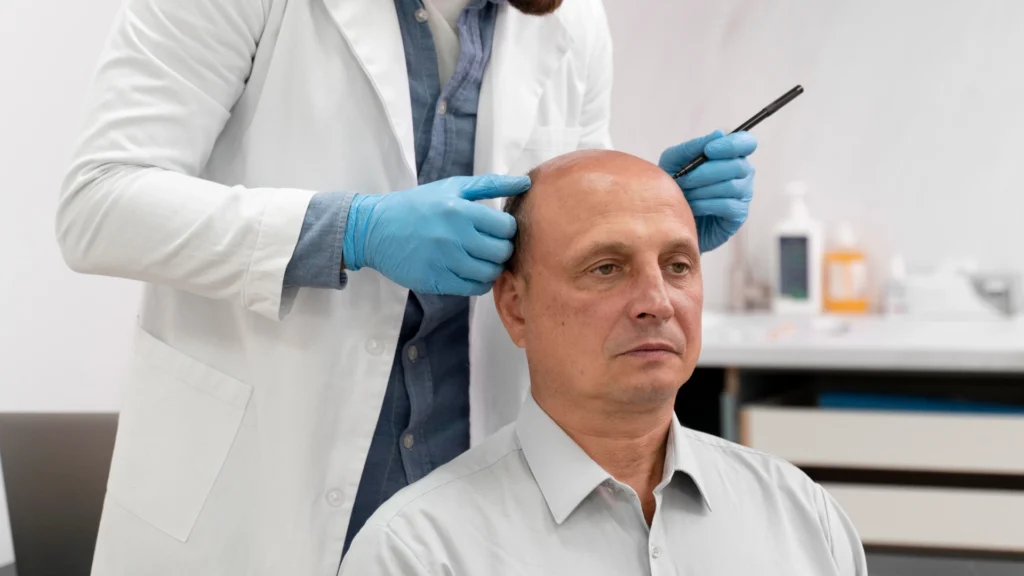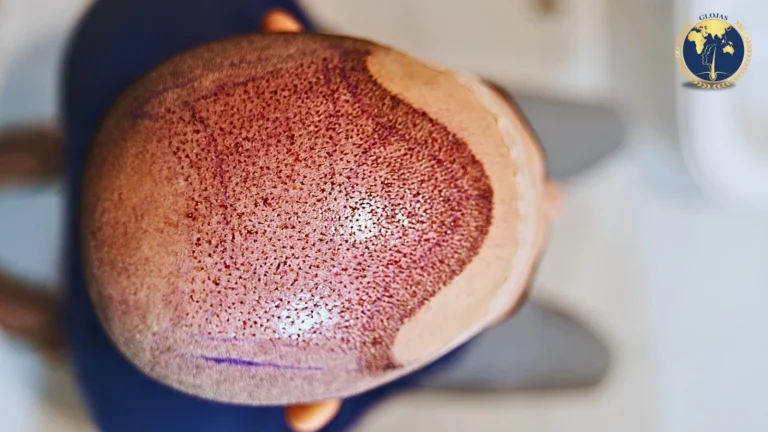Planning Your Hair Transplant Journey
Choosing the Right Clinic
Embarking on a hair transplant journey begins with selecting the right hair transplant clinic. Research various clinics, paying close attention to their reputation, reviews, and the expertise of their hair transplant specialists. Clinics like Glojas, renowned for their SMART™ FUE hair transplant procedure, often have a proven track record of successful hair transplant surgeries.

Researching Hair Transplant Options
Understanding the different hair transplant options is crucial. The most common procedures include FUT (Follicular Unit Transplantation) and FUE (Follicular Unit Extraction). Research each method’s benefits, risks, and recovery timeline to determine which is best suited for your hair loss pattern and lifestyle.
Setting a Budget
Budgeting is an essential part of planning your hair transplant. Hair transplant cost can vary significantly based on the clinic, location, and extent of the procedure. Be sure to consider additional expenses such as travel, accommodation, and post-op care products.
Hair Transplant Surgery

Consultation with the Hair Transplant Specialist
A thorough consultation with your chosen hair transplant surgeon is vital. During this meeting, discuss your hair loss history, desired outcomes, and any concerns you may have. The specialist will evaluate your scalp and hair follicles to create a personalized hair transplant plan.
Pre-Op Instructions
Adhering to pre-op instructions is crucial for a successful hair transplant surgery. Your specialist will likely advise you to avoid certain medications, alcohol, and smoking. Following these guidelines helps minimize potential complications in hair transplantation during and after the transplant.
Packing Essentials for the Trip
If you’re traveling for your hair transplant, pack essentials such as comfortable clothing, prescribed medications, and any necessary documentation. Preparing ahead of time ensures a smooth and stress-free journey to the hair transplant clinic.
Arriving at Your Destination
Travel Tips for a Smooth Journey
Ensure you have all travel arrangements sorted, including transportation to and from the airport. Staying relaxed and hydrated during your journey can help you arrive at your hair transplant clinic in optimal condition.
Check-In at the Clinic
Upon arrival at the clinic, you’ll check in and fill out any necessary paperwork. This step includes confirming your personal details and the specifics of your hair transplant procedure.
Meeting the Medical Team
Meeting the medical team helps build confidence and comfort. The team will explain the hair transplant timeline, the steps involved, and answer any last-minute questions you might have about the procedure.
Understanding the Hair Transplant Procedure
Explanation of the Process
The hair transplant procedure begins with the extraction of hair grafts from the donor area. These hair grafts are then meticulously implanted into the thinning or balding areas of your scalp. Clinics like Glojas use the SMART™ FUE technique for precise and natural-looking results.
Anaesthesia and Pain Management
Local anesthesia is administered to ensure a pain-free experience during the hair transplant surgery. Post-surgery, your doctor will prescribe pain management medications to address any discomfort you might experience during the initial recovery days.
Duration of the Surgery
The duration of a hair transplant surgery can vary depending on the number of grafts being transplanted. Usually, the process takes around 4 to 8 hours. You can unwind and may even enjoy a film or some music.
Recovery Period
Following your hair transplant, you’ll receive detailed post-op care instructions. These will include guidelines on washing your hair, avoiding direct sunlight, and not engaging in strenuous activities for a specified period to ensure optimal recovery.
Mild discomfort and swelling are common after a hair transplant. Applying prescribed medications and cold compresses can help alleviate these symptoms. It’s essential to follow your surgeon’s advice to manage any side effects effectively.
Hair growth after a hair transplant follows a specific timeline. Initially, transplanted hair may shed, which is normal. New hair growth typically starts within a few months and continues to improve over the year. Keeping a hair transplant growth chart can help track your progress.
# ol dudley # hair transplant treatment # hair restoration surgery # hair thinning
Hair Transplant Recovery Timeline
Understanding the hair transplant recovery timeline is crucial for setting realistic expectations. The first seven days after hair transplant surgery involve the most significant healing and require careful attention to post-op care instructions. During this period, you might experience mild redness and swelling.
In the first week, it’s essential to avoid activities that might disrupt the transplanted grafts. By the end of the second week, the transplanted areas begin to heal, and the initial shedding of transplanted hair follicles starts. This shedding is a natural part of the hair growth cycle and is known as shock hair loss. Hair regrowth will commence a few months post-surgery, with noticeable results around the six-month mark. Full results typically manifest within 12 to 18 months, showcasing a successful hair transplant operation.
Hair Transplant Timeline
Initial Days After Hair Transplant
The days after hair transplant surgery are critical for the recovery process. The first week demands strict adherence to post-op care, avoiding any activities that could damage the transplanted grafts. During these initial days, patients often experience mild redness and minimal hair loss in the transplanted areas.
Hair Growth Timeline
The hair growth timeline after a hair transplant varies among individuals. Generally, new hair starts to grow within three to four months, following the initial shock hair loss. This period marks the beginning of the hair growth cycle, where transplanted hair follicles enter the anagen phase, leading to continuous hair regrowth. Full results are usually visible within 12 to 18 months post-surgery.
Exploring the Local Area
While you’re recovering, take the opportunity to explore the local area. Many hair transplant clinics are located in cities with rich cultural and recreational offerings. Light sightseeing can be a pleasant distraction during your recovery days.
Enjoying local cuisine is another way to enhance your trip. Be mindful of your diet, especially in the immediate post-op period, but don’t miss out on experiencing new flavors and dishes.
Engage in relaxing activities such as gentle walks, reading, or enjoying a spa treatment. These activities can aid your recovery by keeping your stress levels low and promoting overall well-being.
Follow-Up Appointments

Follow-up appointments are crucial to monitor your hair transplant results. During these visits, your specialist will assess your scalp, hair growth progress, and address any concerns you might have.
Regular check-ups allow your specialist to track your hair growth and make any necessary adjustments to your post-op care plan. This ensures that your hair transplant results are progressing as expected.
Never hesitate to discuss any concerns or questions during your follow-up appointments. Open communication with your specialist is key to a successful and satisfying hair transplant journey.
Before and After: Hair Transformations




Documenting your hair transplant journey with before-and-after photos is a great way to visualize your transformation. These photos can be a source of motivation and satisfaction as you witness your hair growth progress.
Reading testimonials from other patients who have undergone hair transplant surgery can provide valuable insights and reassurance. Their experiences can help set realistic expectations and inspire confidence in your decision.
Many patients experience a significant boost in confidence after their hair transplant. The improved appearance and restored hairline can enhance self-esteem and overall quality of life, making the journey worthwhile.
Additional Insights and Experiences
Jonathan Burns, a well-known specialist in UK hair transplants, emphasizes the importance of a thorough consultation and personalized treatment plan. Luke Elston, another expert in the field, highlights the advancements in FUE hair transplant techniques, which have significantly improved hair transplant results. Meanwhile, Rikesh Patel points out the necessity of understanding the hair growth cycle and recovery process to set realistic expectations for hair regrowth.
Post-surgery care is vital for the success of your hair transplant. This includes using gentle shampoos recommended by your surgeon and avoiding any activities that could disrupt the transplanted grafts. Proper care ensures optimal healing and minimizes the risk of complications in hair transplantation.
One common concern is the potential for shock hair loss, which is a normal part of the hair growth cycle. Understanding this phenomenon can help patients remain patient and optimistic about their hair regrowth journey. Additionally, mild redness and minimal hair loss in the initial days after the transplant are typical and should subside with proper care.
Conclusion
Embarking on a hair transplant journey is a significant decision that requires careful planning and consideration. From selecting the correct clinic to grasping the hair transplant process and aftercare, each stage is crucial in attaining the desired hair transplant outcomes. With the right approach and professional guidance, you can look forward to a successful transformation and renewed confidence.
FAQs
How long does it take to recover from a hair transplant?
Recovery from a hair transplant typically takes about 2 to 3 weeks for the initial healing process. Full hair growth can be expected within 12 to 18 months.
How long does a hair transplant take from start to finish?
From the initial consultation to full recovery, the entire hair transplant journey can take up to 18 months. The surgery itself usually lasts between 4 to 8 hours.
What happens 10 years after a hair transplant?
Ten years after a hair transplant, most patients maintain their transplanted hair, provided they follow proper post-op care and maintenance. Hair growth patterns will continue based on individual factors.
What are the stages of hair transplant?
The stages of a hair transplant include planning, the actual procedure, initial recovery, and long-term hair growth monitoring. Each stage is crucial for achieving the best possible results.
